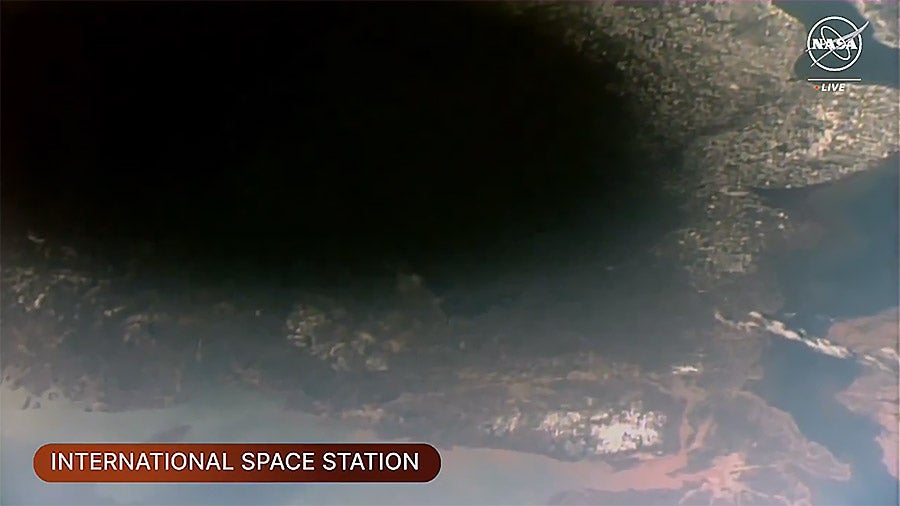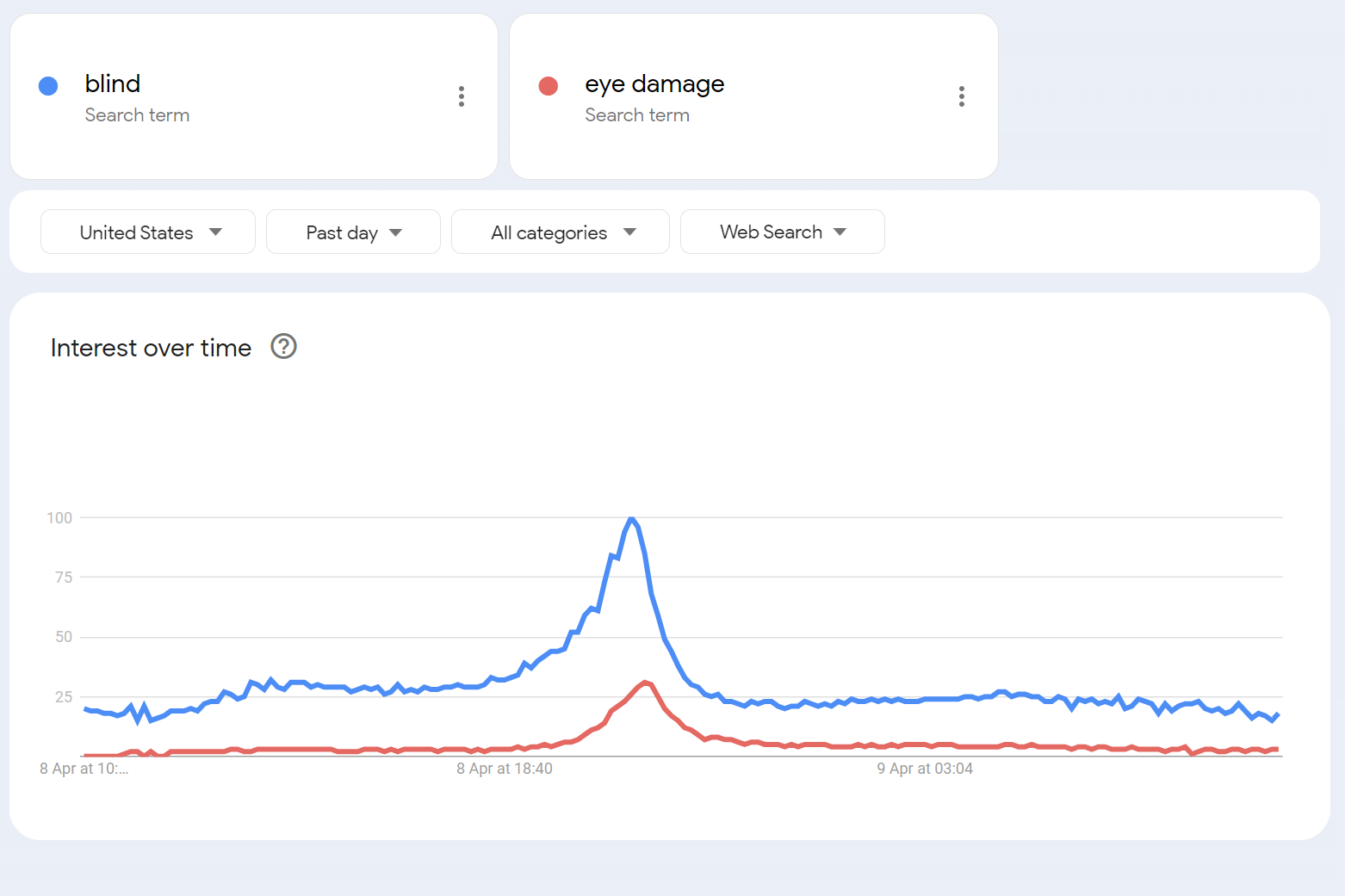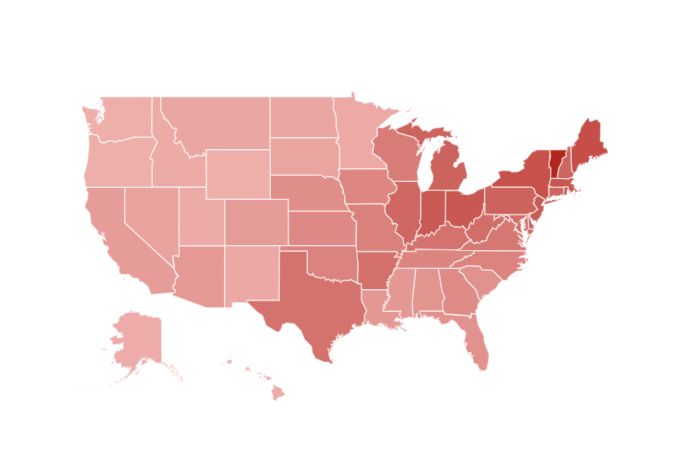Total solar eclipse 2024 highlights: Rare phenomenon darkens North America’s skies
Path of totality spans parts of Mexico, eastern Canada and 13 US states, as experts give information about how to safely see it and take pictures
Your support helps us to tell the story
From reproductive rights to climate change to Big Tech, The Independent is on the ground when the story is developing. Whether it's investigating the financials of Elon Musk's pro-Trump PAC or producing our latest documentary, 'The A Word', which shines a light on the American women fighting for reproductive rights, we know how important it is to parse out the facts from the messaging.
At such a critical moment in US history, we need reporters on the ground. Your donation allows us to keep sending journalists to speak to both sides of the story.
The Independent is trusted by Americans across the entire political spectrum. And unlike many other quality news outlets, we choose not to lock Americans out of our reporting and analysis with paywalls. We believe quality journalism should be available to everyone, paid for by those who can afford it.
Your support makes all the difference.A total eclipse of the Sun plunged a stretch of North America into darkness on Monday, with millions of spectators across the US, Mexico and Canada hoping to catch a glimpse of the rare event.
It was North America’s biggest eclipse crowd ever, with the path of totality crossing directly over 44 million people.
More were drawn in from across the world thanks to the lure of clear skies and up to four and a half minutes of midday darkness in some places.
Almost everyone in North America was guaranteed at least a partial eclipse, weather permitting.
The best weather was seen in Mexico and at the tail end of the eclipse in Vermont and Maine, as well as New Brunswick and Newfoundland.
“Cloud cover is one of the trickier things to forecast,” National Weather Service meteorologist Alexa Maines explained at Cleveland’s Great Lakes Science Centre on Sunday. “At the very least, it won’t snow.”
ISS astronauts photograph Moon's shadow on Earth
Nasa astronomers Matthew Dominick and Jeanette Epps took photographs and videotaped the Moon’s shadow on Earth as the International Space Station (ISS) passed between the Moon and the Earth.
The ISS was orbiting 260 miles above southeastern Canada as the Moon’s shadow, or umbra, was moving from New York state into Newfoundland, according to Nasa.

The orbiting laboratory experienced a totality of about 90 per cent during its flyover period.
Watch: Observatory shares timelapse video of eclipse
The Mount Washington Observatory in New Hampshire shared on X a timelapse video showing the Moon’s shadow blocking out the Sun.
The region experienced a partial eclipse with “99.97 per cent coverage” of the Sun.
“Winds were 35-50 mph at the time, so keeping our camera setup stable was a bit of a challenge, so we apologise for the wobble,” the private non-profit observatory said.
Temperatures dropped as eclipse crossed across US
As the solar eclipse passed across the US, many regions observed a drop in temperature.
“Interesting weather data at Cleveland-Hopkins Airport. The temperature dropped almost 10 degrees leading up to and during the total solar eclipse!” National Weather Service (NWS) Cleveland, Ohio, posted on X.
The total eclipse was visible in the sky over parts of Mexico as well as 15 US states and eastern Canada, while most other parts of North America experienced a partial solar eclipse.
Eclipses are known to have a brief impact on the areas they move through, including small drops in temperatures.
Peculiar red dots around Moon's shadow explained
Skywatchers reported seeing features appearing as ruby-coloured dots around the Moon’s outline as it eclipsed the Sun.
During a total solar eclipse, people on the Earth can only see the Sun’s atmosphere, or corona forming a halo as the Moon blocks the rest of the light from the Sun.
The fiery halo, called a prominence, is formed by massive loops of plasma hanging attached to the visible surface of the Sun.
Parts of the halo can also appear reddish as their plasma can originate deeper in the sun’s atmosphere – in a layer with hydrogen at high temperatures which emits red light.
When America would see next total solar eclipse
After Monday, North Americans will have to wait exactly 8 years, 11 months and 22 days to see another total solar eclipse.
A total solar eclipse visible from North America would occur next only on 30 March, 2033, according to Nasa.
People in Utqiagvik, Alaska – the most northerly settlement in the US – will be in the path of totatility.
Overall, in both Russia and the US, about 67,600 people are likely to be living in the path of totality during the 2033 eclipse.
In comparison, Monday’s eclipse was visible to over 40 million people.
After that, the next total solar eclipse covering North America is expected to be on 22 August, 2044.
During this eclipse, Calgary and Edmonton in Canada as well as Montana and North Dakota in the US, will get a view of the eclipsed Sun.
Then just under a year after that, on 12 August 2045, the US will have a coast-to-coast total solar eclipse with totality visible from northern California, Kansas, Nevada, Utah, Colorado, Oklahoma, Alabama, Arkansas, Mississippi, and Florida.
What scientists hope to understand from eclipse
Scientists in several parts of the US are conducting studies to better understand how yesterday’s total solar eclipse affected the planet.
Space physicist Darci Snowden from Central Washington University sent up balloons to capture data and better understand how weather changed during the eclipse.
Weather balloons capable of flying up to 33km (20m) were flown into the stratosphere, carrying battery-powered instruments for collecting data on temperature, humidity, pressure, as well as wind direction and speed.
A Nasa team also launched data-collecting jets above Earth’s atmosphere to learn more about the structure and temperature of the Sun’s outer atmosphere.
“The total solar eclipse is a really exciting way to engage the public in science while at the same time advancing our knowledge of the sun and its impacts on us here on Earth,” Colleen Hartman, director of the Space Studies Board of the National Academies, said.
Scientists at MIT’s Haystack Observatory are studying how the solar eclipse affected the topmost layers of the atmosphere, including its outermost ionosphere layer where many satellites orbit.
They hope to study how the ionosphere responds before, during, and after the eclipse, as the sun’s radiation suddenly dips.
Researchers also observed how animal behaviours changed when the eclipse passed over North America.
As the eclipse neared totality, many animals in the Columbus Zoo, including sloth bear, red pandas, reindeer, ostriches went to sleep as if it was nighttime.
“About seven minutes afterward, it started to lighten back up a little bit and they all stood up and they started grooming as though they were preparing for the day,” Shannon Borders, curator of the zoo’s Heart of Africa exhibit, told The Columbus Dispatch.
Observers in Fort Worth Zoo, Texas said some animals displaying curiosity and vigilance during the eclipse.
Animals including elephants, giraffes, bonobos, and gorillas at the zoo reportedly moved toward their barn doors, something they do at night.
Flamingos and penguins at the zoo formed a cluster before totality, while others birds began to get quieter, authorities said.
Americans moved across cities braving traffic to see eclipse
Roads in many parts of the US experienced traffic jams and parking lots packed to full capacity as people flocked to see the total solar eclipse.
In Maine, for instance, officials said there were traffic delays round the state, with some roads seeing delays by as much as three hours.
Tens of thousands of visitors reportedly flocked in to see the cosmic spectacle in Maine – the last stop in the path of the eclipse before it headed into Canada.
Municipal garages in many parts of Burlington, Vermont were full more than four hours ahead of totality, NPR reported.
Visitors were reportedly coming into see the eclipse from across the world, including in 90 private planes.
Eclipse briefly lowered solar energy generation across US states
Solar energy generation across many US states, including Texas and Florida briefly reduced during the total solar eclipse yesterday.
Texas is expected to have lost the most solar generating capacity as most of the state is on the path that will lose 90 per cent to 99 per cent of sunlight.
Electricity generators in affected areas increased output from other sources of electricity generation to supplement the decrease in solar power, according to the US Energy Information Administration (EIA).
An increased demand from homes and businesses with rooftop solar during the eclipse was already anticipated.
“Even with the eclipse, we still expect solar power will be the third-largest contributor of electricity in the US on 8 April, behind natural gas and nuclear,” the EIA said.
Why scientists observed Earth's ionosphere during eclipse
During yesterday’s eclipse, scientists in several parts of the US used various instruments to measure changes in the density of electrons in the Earth’s upper atmosphere.
The electron content in the ionosphere is a proxy for how ionised this layer is, which affects satellite transmissions crucial for such things as communication and navigation.
While the ionosphere electron levels were found to dip in some places as anticipated during the eclipse, it is essential to determine how waves in this outer atmosphere layer, generated during totality, propagated.
“We’ll look at how waves generated around the eclipse affect navigation systems and will directly image the eclipse in the ionosphere as it moves,” space weather researcher David Themens from the University of Birmingham, said.
Searches for ‘blind’ and ‘eye damage’ surge following eclipse
Despite all the warnings about the risks of staring at the Sun without protection, Google Trends data shows that searches for ‘retina damage’, ‘eyes hurt’, ‘can’t see’, ‘blind’ and ‘eye damage’ all spiked in the hours after the eclipse.

Nasa warned ahead of the celestial event that the consequences could be severe for anyone not taking appropriate measures to protect their eyes.
“Except during the brief total phase of a total solar eclipse, when the Moon completely blocks the Sun’s bright face, it is not safe to look directly at the Sun without specialized eye protection for solar viewing,” the US space agency said.
“Viewing any part of the bright Sun through a camera lens, binoculars, or a telescope without a special-purpose solar filter secured over the front of the optics will instantly cause severe eye injury.”

You can read the full story here.

Join our commenting forum
Join thought-provoking conversations, follow other Independent readers and see their replies
Comments